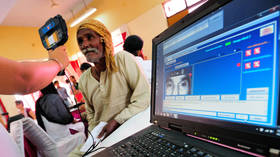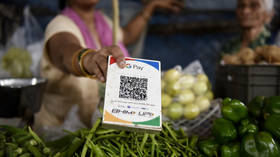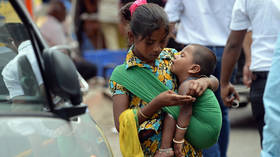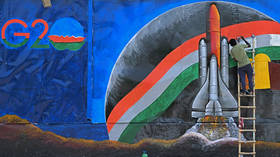India’s G20 legacy: How Bharat enabled opening of half a billion bank accounts in record time

Amid the run-up to the G20 Summit meeting in New Delhi this weekend, India has celebrated the ninth anniversary of its ambitious program to bank its unbanked millions.
In just nine years, India managed to provide a no-frills bank account, or ‘Jan Dhan,’ to 509 million people – a staggering achievement.
According to a recent research paper from the Bank for International Settlements, this scale of financial inclusion would normally take 47 years for a country to achieve.
Around the anniversary of this accomplishment, India also embarked on an equally ambitious project the Open Credit Enablement Network (OCEN), to provide short-term, unsecured working capital for small and medium enterprises. Though they account for nearly a third of global gross domestic product, these small firms struggle to access bank credit and are hence forced to lean on usurious sources of funds.
Significantly, both these initiatives are based on the use of public digital rails, wherein both the private and public sectors can innovate on top of this digital infrastructure. The moniker for this is the Open Digital Economy. Essentially, these are interoperable digital building blocks – enabling key functions like identity and payments – that can then be mixed and matched to undertake public good at the scale India managed to pull off in the last decade.
Digital journey
India’s success with financial inclusion at scale rests on the foundation of India’s unique identity project, Aadhaar, the country’s first Digital Public Good (DPG). It was rolled out in 2009 and solved the challenge of creating a digital identity for 1.3 billion Indians.
This is exactly why 80% of Indian adults today own a bank account. In 9 years, the country went from being the most unbanked to being in the top percentile of banked countries.
The fortuitous coincidence of the anniversary of India’s financial inclusion achievement provided the proof of concept, if it was needed, to the empowered group of G20 digital ministers who convened in mid-August in Bangalore. No surprises then that the ministers unanimously – a rare achievement in a very divided G20 – stamped their approval on an initiative of the Indian Presidency to use DPGs globally to deliver public good at scale.
To enable their use in other countries, including low-and-middle-income countries that are not part of this global high table, the ministers laid out a G20 framework that will enable DPGs that are inclusive, human-centric, and sustainable.
To be sure, financial inclusion has been on the G20 agenda for a long time. It is just that the DPG framework so successfully adopted in India has been accepted as the template to be deployed in other countries.
Effectively, India has left its legacy on the G20 Presidency, which now passes on to Brazil. A collateral gain for India is that this soft power capability is an additional instrument of foreign policy.
The Bharat way
This global recognition at the G20 forum is an outcome of a series of initiatives undertaken quietly by India over the last few years to expand the global group of believers in DPGs.
For instance, last June a motley group of government leaders, international development organizations, and philanthropists converged in Oslo under the aegis of the Digital Public Goods Alliance (DPGA), a multi-stakeholder initiative seeking to accelerate the use of DPGs to achieve sustainable development goals in low and medium-income countries.
They pledged support to technology sharing and funding to forge a global digital public infrastructure – inclusive digital systems that, among other things, enable frictionless cash transfers, identification of beneficiaries, and data exchange to achieve social good. Effectively, it was the soft launch of an ambitious plan to foster the use of DPGs to promote inclusive growth.
The endorsement by the G20 is significant as the body includes both developed and developing countries, and packs both heft and influence. Between them, the members account for 85% of global GDP, 75% of international trade, and two-thirds of the global population. This influence will only grow with the imminent induction of the African Union – the next big global growth center.
The Indian digital innovation story began with Aadhaar. It was the country’s first DPG and based on open protocols, which guaranteed interoperability. As a result, when a payments DPG was forged under Unified Payments Interface (UPI), it could be mixed with Aadhaar to solve a key function of banking: Know Your Customer (KYC). Since KYC could be done electronically, eKYC opened the door for unprecedented FinTech innovation.
Until the launch of UPI, electronic wallets offered by FinTechs operated like walled gardens wherein platforms limited user access to build a monopoly. Overnight, the UPI interface enabled wallets and banks to talk to each other using the unique UPI identity provided to every user as a bridge.
This was not just about democratizing the business of payments since UPI transactions clocked 10 billion in August this year and of this, more than two-thirds are for sums less than 500 rupees (about $6).
Instead, it opened the door for another public policy innovation wherein UPI was combined with an individual’s bank account and mobile number to create an ‘economic GPS’. This enabled the government to target social welfare spending, saving the national auditor 3 trillion rupees ($36 billion) cumulatively in leakages.
And when a lockdown was imposed following the outbreak of Covid-19, the government was able to transfer cash directly to over 100 million beneficiaries at the bottom of the pyramid. This DPG framework was also deployed to deliver a record 2.2 billion Covid-19 vaccines seamlessly.
The India story so far has demonstrated to the world that DPGs can be used to achieve public good at scale. This is because they enable democratization, disintermediation, and transparency. Together, they facilitate frictionless transactions that spur productivity and come down hard on corruption.
The G20 endorsement will now expand the global footprint of DPGs, especially in the Global South, which, like India, is yet to overcome the handicaps of underdevelopment.
The statements, views and opinions expressed in this column are solely those of the author and do not necessarily represent those of RT.
















